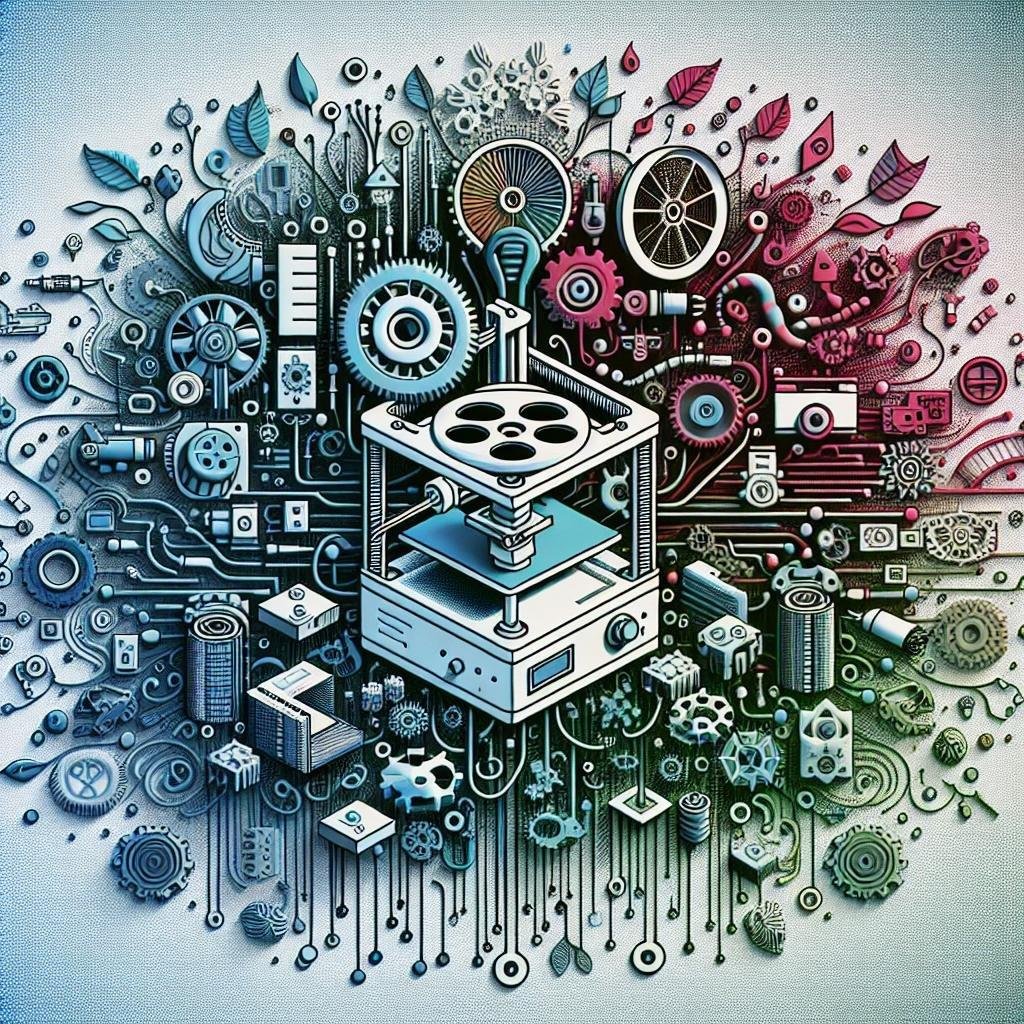In a world where inventiveness knows no bounds, the convergence of art and technology continually reshapes the landscapes of creativity. Enter 3D printing, the unsung hero quietly revolutionizing the entertainment and film industries. From the silver screens that capture our fantasies to the elaborate stage designs that bring stories to vibrant life, this innovative technology is bridging the gap between the conceptual and the tangible, transforming dreams into reality, one printed layer at a time. Join us as we embark on a journey through the dazzling world of 3D printing in entertainment, where storytellers become architects of wonder, and the fantastical becomes touchable. Get ready to explore how this groundbreaking technology is not only redefining the creation of movie magic but also sparking a renaissance of creativity in ways we’ve only just begun to imagine.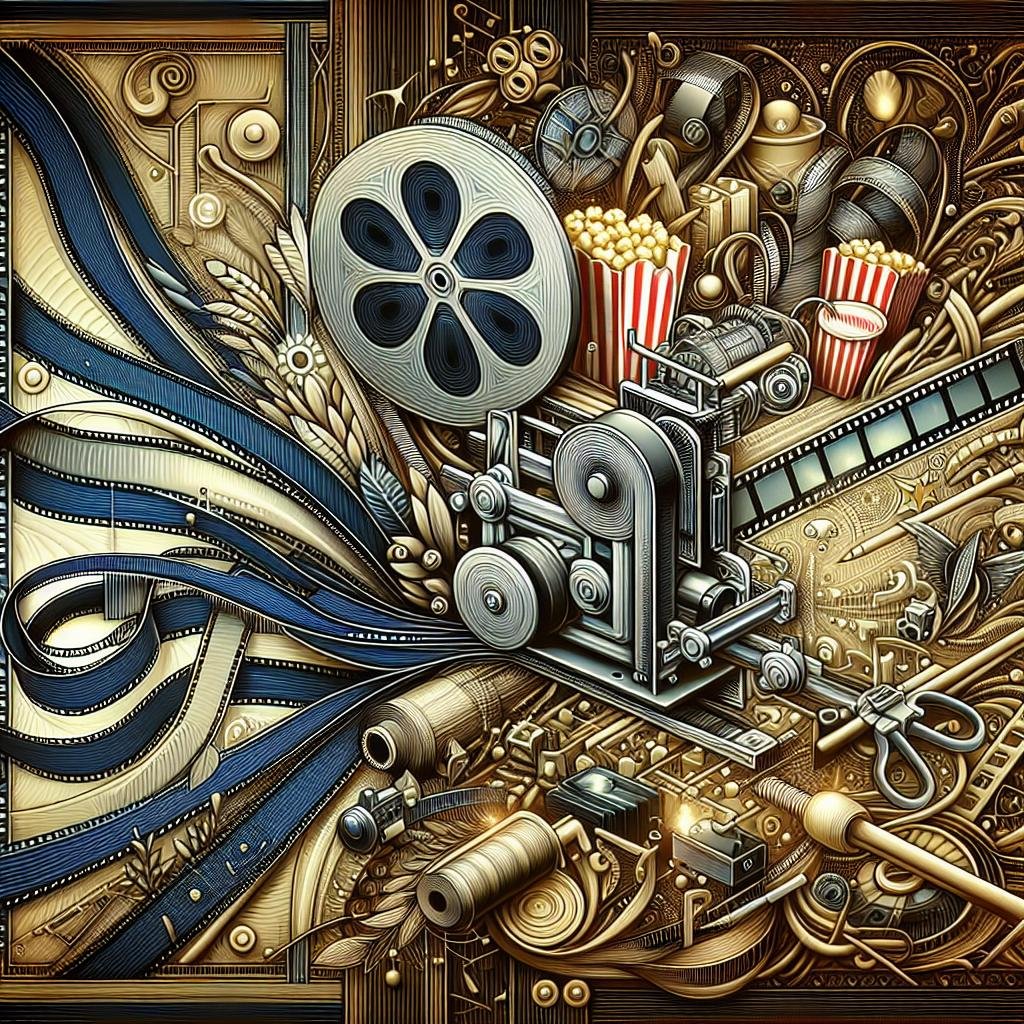
crafting New Worlds: The Artistry of 3D Printing in set Design
In the realm of entertainment and film, 3D printing is rapidly becoming a game-changer, enabling unprecedented creativity and efficiency in set design. By allowing designers to materialize their visions with precision and speed,this technology has transformed the way worlds are built on screen.No longer restricted by the constraints of traditional methods,set designers can now conjure entire landscapes,intricate props,and awe-inspiring elements at the push of a button. This digital craftsmanship gives way to a level of detail and personalization that was previously unimaginable, providing directors and audiences alike with richer environments and more authentic storytelling. Moreover, the combination of digital modeling and tangible output means that changes can be made on-the-fly, fostering an iterative process that encourages innovation.
As the entertainment industry increasingly embraces this cutting-edge technology, several advantages emerge:
- Cost-Effectiveness: Reduces the need for costly and time-consuming manual labor.
- Time Efficiency: Speeds up production timelines by allowing faster prototyping and fabrication.
- Design Adaptability: Simplifies the process of creating complex geometries and customizable designs.
- Sustainability: Minimizes waste as pieces are printed to exact specifications, with eco-kind materials often used.
| Aspect | Traditional Method | 3D Printing |
|---|---|---|
| Turnaround Time | Weeks | Days |
| Customization | Limited | Unlimited |
| Waste Production | High | Low |
Ultimately, 3D printing stands as a testament to the remarkable evolution of set design, offering a universe of possibilities for creative expression and storytelling. This technological marvel not only pushes the boundaries of what can be imagined and built but also fosters a future where creativity knows no bounds.
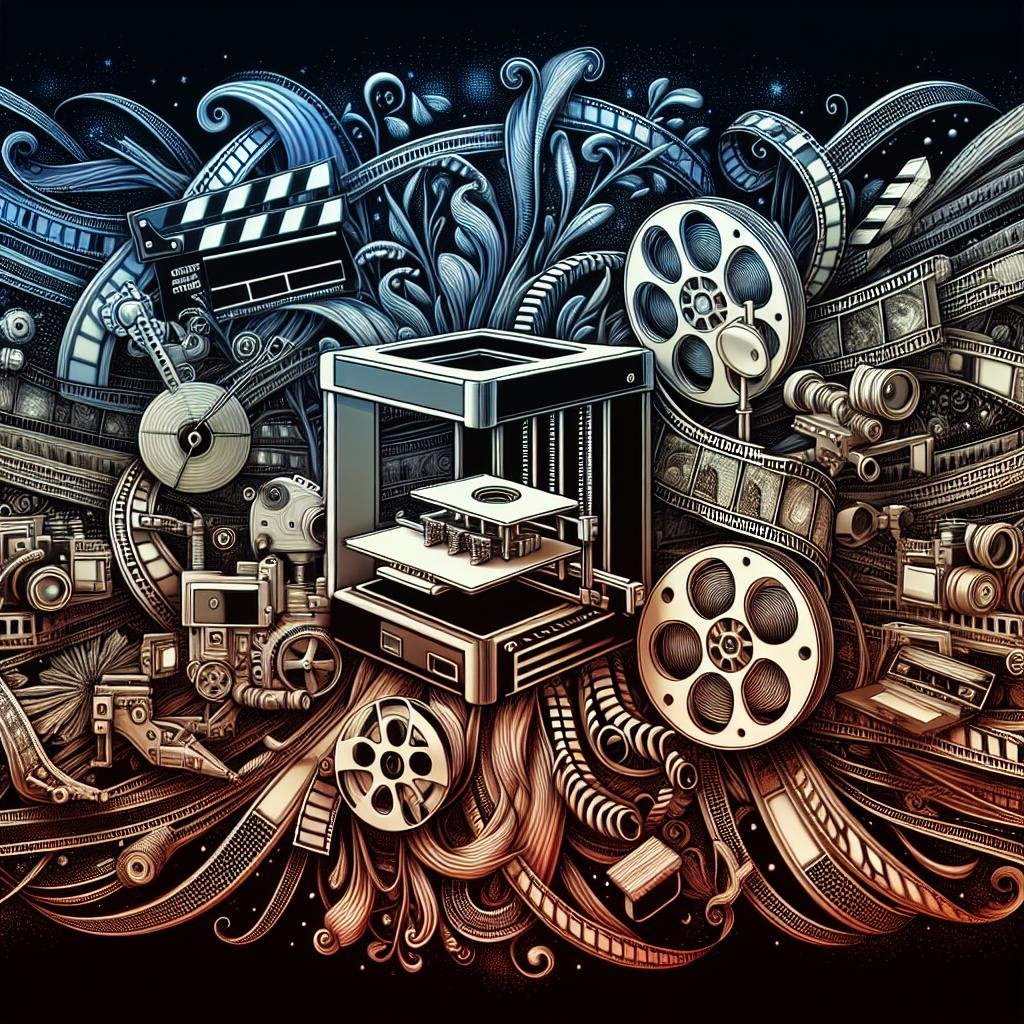
Revolutionizing Storytelling: From Concept to Creation with 3D Technology
The interplay between imagination and reality has reached new heights as 3D technology breathes life into once-static scripts. From envisioning fantastical worlds to crafting tangible elements, 3D printing offers a treasure trove of possibilities for filmmakers and storytellers. This disruptive innovation empowers creators to explore their narratives well beyond traditional constraints. Sets and props,previously laborious tasks,can now be actualized with pinpoint precision and remarkable speed. Directors no longer have to rely solely on costly location shoots or extensive post-production edits; they can materialize exact replicas, uniquely designed artifacts, and even futuristic landscapes with the aid of 3D printing.
The metamorphosis in storytelling isn’t just limited to physical artifacts in the filming process. character design and costumes benefit significantly from this technology, allowing for a harmonious fusion of intricate details and creative freedom. imagine creating iconic creatures or avant-garde costumery through an iterative, yet flexible, design process. Would you like to dive deeper into specific areas where 3D printing makes a significant mark? Here are some key benefits it offers:
- Rapid prototyping of props and models
- Customization and personalization of set pieces
- Reduced cost and time for production
| Aspect | Impact of 3D Printing |
|---|---|
| Set Design | Rapid creation and iteration of complex sets |
| Special Effects | Innovative effects via tailored 3D models |
| Costumes | High detail and unique costume elements |
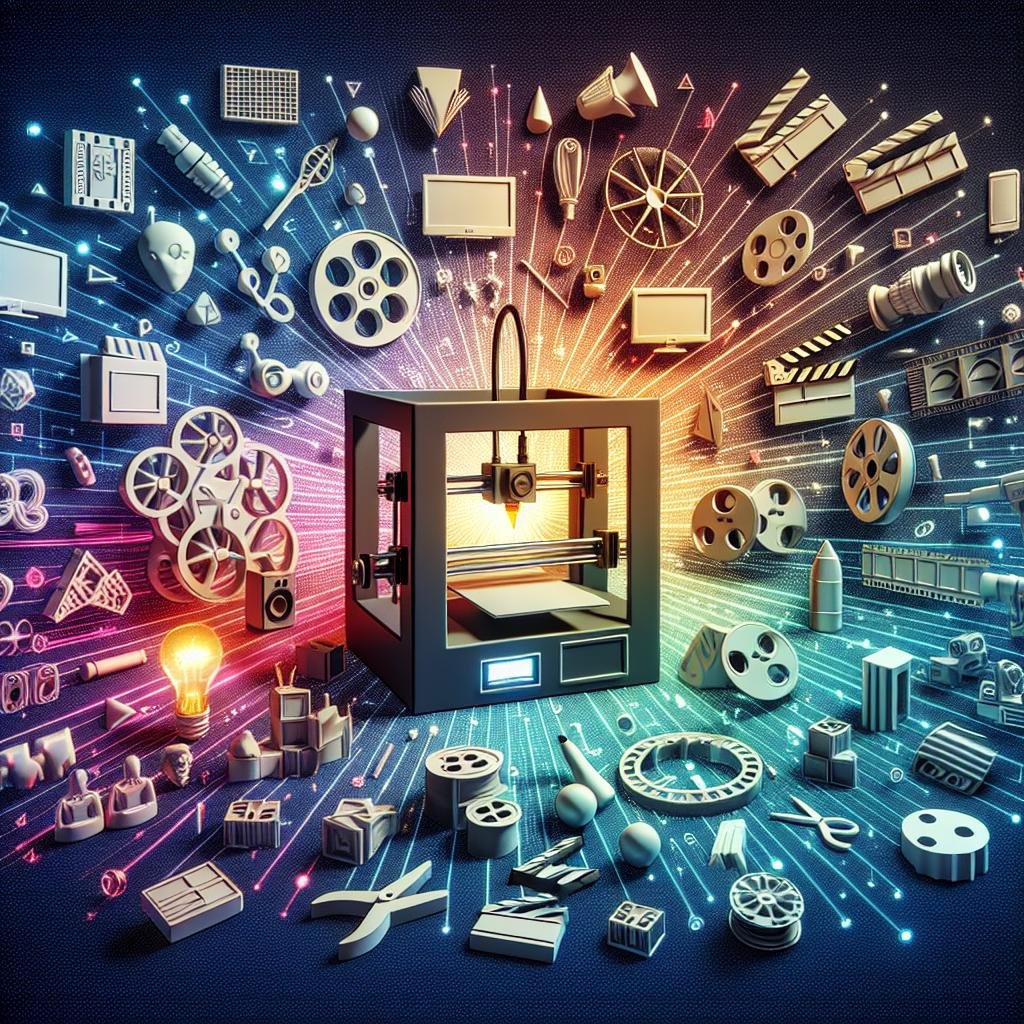
Behind the Scenes: How Filmmakers Leverage 3D Printing for Special Effects
In the dynamic world of filmmaking, where every frame is a blend of art and technology, 3D printing has emerged as a game-changer for crafting breathtaking special effects. Instead of relying solely on traditional methods, filmmakers now turn to 3D printing for creating intricate models, props, and even costumes with unmatched precision and detail. Imagine a medieval epic where dragon scales shimmer not just through CGI, but are tangible artifacts crafted with intricate textures through advanced 3D printing techniques. This technology allows art departments to bring visions to life that were once deemed to elaborate or time-consuming. Moreover,3D printing accelerates production timelines,which is crucial in the fast-paced habitat of film production.
- Customization: Tailor designs to specific director or narrative needs.
- Efficiency: Faster creation of prototypes and props.
- Sustainability: Eco-friendly materials reduce waste.
- Cost-effectiveness: Lower cost compared to traditional fabrication methods.
While the usage of 3D printing is prevalent in creature and sci-fi genres, its influence spans across various film types. Productions ranging from small self-reliant films to blockbuster franchises benefit from the synergy of technology and artistry. Below is a glimpse of how 3D printing is utilized in creating key movie elements:
| Film Element | 3D Printing Request |
|---|---|
| Masks & Costumes | Designing intricate costume details |
| Miniature Sets | Crafting detailed set pieces for stop-motion animation |
| Props | Generating replicas of ancient artifacts |
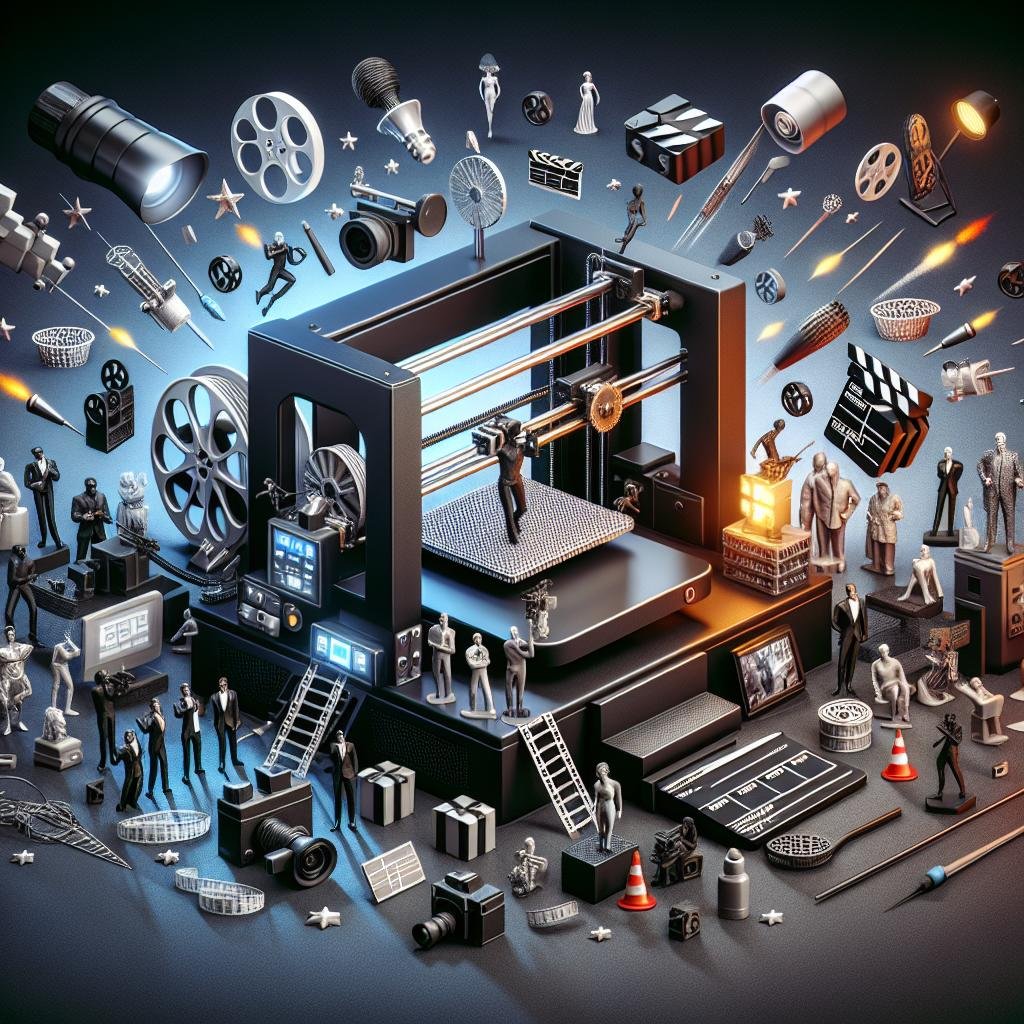
Future-Proofing the Industry: Embracing 3D Printing for Cost Efficiency and Innovation
The entertainment and film industry is at the forefront of innovation, constantly searching for new ways to captivate audiences and tell stories. 3D printing has emerged as a game-changer in this pursuit,redefining what’s possible with set design,costumes,and even props. By significantly reducing the cost and time needed for creating these elements, filmmakers and studios are investing in this groundbreaking technology to remain ahead. gone are the days when intricate designs required weeks of labor-intensive sculpting and fabrication. now, 3D printers can swiftly bring these imaginative creations to life, enabling more ambitious visual storytelling and immersing audiences like never before.
Moreover, the impact of 3D printing extends beyond cost savings. It promotes a new level of creative freedom that can spawn innovations previously thought unattainable. As a notable example, when conceptualizing futuristic set pieces or elaborate costumes, creators can experiment with complex geometries and intricate textures that were once impractical. Here’s why 3D printing matters in this industry:
- Rapid Prototyping: Experimentation is quicker and easier than ever.
- Customization: Tailor every piece to fit specific narrative requirements.
- Reduced Waste: Streamline manufacturing processes, minimizing material waste.
| Aspect | Traditional Methods | 3D Printing |
|---|---|---|
| Time to Produce | 3-4 weeks | 2-3 days |
| Material Usage | High Waste | Optimized |
| Creative Flexibility | Limited | High |
Q&A
Q&A: Exploring the Intersection of 3D Printing and the Entertainment Industry
Q1: What are the primary ways 3D printing is being used in the entertainment and film industry?
A1: 3D printing is revolutionizing the entertainment and film industry by creating lifelike props, costumes, and even set pieces faster and more cost-effectively.Filmmakers can print intricate models for special effects, enabling more realism and creativity in storytelling. From elaborate costumes in sci-fi films to complex architectural models for set design, 3D printing offers remarkably detailed and customizable options.
Q2: How does 3D printing enhance creativity in filmmaking?
A2: Creativity thrives on the ability to explore limitless possibilities, and 3D printing opens the door to just that. Directors and designers can prototype and iterate on concepts faster than ever. Whether it’s creating a mythical creature or a futuristic gadget, the technology allows creators to push the boundaries of imagination, bringing previously unimaginable concepts to life with a high degree of precision.
Q3: Can you give examples of films or shows that have used 3D printing?
A3: Absolutely! Movies like Guardians of the Galaxy, Black Panther, and The Hobbit series have embraced 3D printing for prop creation. as a notable example, intricate jewelry and armor used in Black Panther were crafted using 3D printing, allowing for intricate detailing that would have been challenging by hand. Similarly, 3D-printed models were essential for visualizing and developing complex creature designs in the Hobbit series.
Q4: How does 3D printing affect the cost and time involved in film production?
A4: 3D printing significantly reduces both cost and time involved in film production. Traditional methods of handcrafting props and costumes can be labor-intensive and expensive. With 3D printing, intricate designs can be created more quickly and with less material waste, leading to considerable savings. This efficiency enables more budget allocation to other areas of production, enhancing the overall quality and scale of the project.
Q5: What challenges does the industry face in adopting 3D printing technology?
A5: While 3D printing offers numerous benefits, it also presents challenges such as the cost of high-end printing equipment and the need for skilled operators and designers to turn digital designs into physical objects. Ther’s also a learning curve associated with integrating this technology smoothly into existing production workflows.However,as technology advances,these hurdles are gradually diminishing,paving the way for broader adoption.
Q6: How is 3D printing influencing future trends in film and entertainment?
A6: As 3D printing technology continues to evolve, it’s poised to play a pivotal role in shaping the future of film and entertainment. The trend is moving towards even more personalized and interactive storytelling experiences,where 3D printing could allow audiences to take home replicas of movie props or experience films in entirely new ways,such as through virtual and augmented reality integrations. This creative synergy holds the promise of groundbreaking advancements in the industry.
Q7: Is 3D printing accessible to independent filmmakers as well?
A7: Yes, 3D printing is becoming increasingly accessible to independent filmmakers, thanks to the availability of affordable printers and user-friendly design software. Indie creators can experiment with DIY printing for their projects, leveling the playing field to some extent with larger studios. This democratization of technology allows for a broader diversity of voices and creativity in the film industry.
Q8: Are there any environmental benefits of using 3D printing in film production?
A8: Indeed! 3D printing can contribute to more lasting film production practices. By reducing material waste and allowing for on-demand printing, the carbon footprint typically associated with transporting and storing large quantities of set materials can be minimized. Additionally, many 3D printers now use eco-friendly materials, further supporting green initiatives within the industry.
Closing Thoughts:
The integration of 3D printing in the entertainment and film industry is more than just a technological upgrade; it’s a gateway to richer creativity and innovation.As the technology continues to advance, it promises to transform how we tell and experience stories on the big screen, making it an exciting frontier for filmmakers and audiences alike.
The Conclusion
As the final credits roll on our exploration of 3D printing’s transformative role in the entertainment and film industry, it becomes clear that the possibilities are as endless as the imagination itself. From the precision-crafted props that transport us into fantastical realms, to the intricate costumes that bring beloved characters to life, 3D printing has become the new muse of creativity—a powerful tool for filmmakers and artists alike.While we’ve uncovered the myriad ways this technology is enhancing storytelling and unleashing innovation across the cinematic landscape, one thing remains certain: we are merely at the dawn of this digital renaissance. As the industry continues to evolve, embracing these advancements with open arms, there’s no telling just how far this symbiotic relationship between art and technology will take us.
So, here’s a fond farewell to you, dear reader. Whether you’re an industry veteran, a budding artist, or simply an enthusiastic admirer of the silver screen, may the magic of 3D printing inspire you to dream bigger, create bolder, and imagine worlds yet unseen. The next blockbuster could very well be imprinted with the wonders of 3D—and the story is just beginning.

